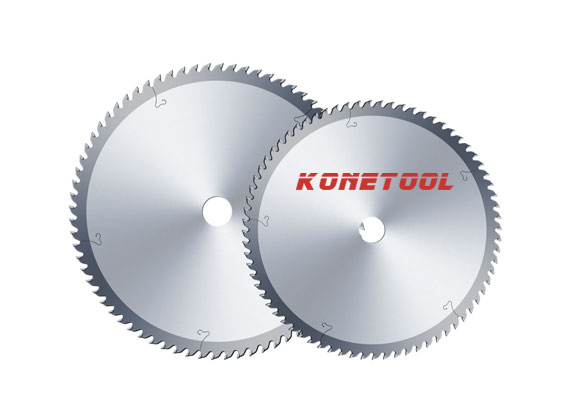
A Comprehensive Guide to Cold Saw Blades
If you’re in the metalworking industry or have a passion for DIY metal projects, understanding the ins and outs of cold saw blades is essential. Cold saws are powerful cutting tools known for their precision and efficiency in cutting through various types of metal. Using a cold saw provides you with a clean, quiet, and spark-free cutting experience, unlike abrasive saws that create sparks and generate heat. It’s similar to using a miter saw for woodwork, allowing you to achieve exceptional accuracy even with the toughest metals. Since cold saw blades can be quite expensive, it is all the more important to consider various factors before making your choice. Here is a comprehensive guide to cold saw blades to help you select the right blade for your business or projects.
What are cold saw blades?
A cold saw blade is a circular saw blade used in a cold saw machine. A cold saw is a sawing machine designed to cut various types of metal. The name “cold saw blades” is because they efficiently dissipate all the energy and heat produced while cutting toward the chips, preventing excessive heat buildup. As a result, both the saw blade and the workpiece can stay cool during the process. There are two types of cold saw blades: high-speed steel (HSS) blades and tungsten carbide tipped (TCT) blades. Generally, cold saw blades run at a relatively low speed. TCT blades can rotate a little faster than HSS blades.
Factors to consider when selecting the right cold saw blade
To better finish your project, you need an appropriate blade. There are several factors to consider when purchasing, such as blade material, blade thickness, workpiece material, etc.
- Blade material
Cold saw blades can be divided into two types according to the material of the blade: High-speed steel (HSS) blades and tungsten carbide tipped (TCT) blades. HSS cold saw blades are made from solid high-speed steel, mainly M2 or M35. They feature outstanding heat and wear resistance and can efficiently cut ferrous and non-ferrous metals. Tungsten carbide tipped (TCT) cold saw blades consist of steel blade bodies with tungsten carbide tips brazed onto blade teeth. TCT blades are more expensive than HSS blades, but they are definitely worth the price. With tungsten carbide tips, TCT cold saw blades are much more durable and efficient than HSS blades. These carbide tips are well-designed to achieve perfect cutting results. However, TCT blades are less shock-resistant. Make sure to control the vibration during operation to protect the blade from damage.
Both HSS and TCT cold saw blades can be resharpened for longer service life.
- Coating
To enhance their durability and prevent wear, cold saw blades are often coated with protective substances such as titanium nitride (TiN) or titanium aluminum nitride (TiAlN). However, in commercial applications, a black oxide coating is usually preferred for its ability to facilitate the even distribution of coolant over the blade’s surface, resulting in improved performance.
- Tooth pitch
The pitch of a cold saw blade, which is calculated in teeth per inch (TPI), refers to the number of teeth it possesses. The tooth count required for a blade is typically dependent on the softness of the material being cut. For general purposes, a versatile blade with 6 to 12 TPI is adequate for most users, unless one frequently works with specific metals such as aluminum, which may require a specialized cold saw blade. Even though having multiple blades for various materials is advantageous, the cost of a high-quality cold saw blade often makes this impractical. Consequently, if you can only afford a single blade, it is highly recommended to invest in a general-purpose blade.
- Cutting material
When selecting cold saw blades, the hardness of the cutting material plays a crucial role. If the material is harder, such as stainless steel or hardened steel, then it is recommended to opt for blades with a higher tooth count (measured in TPI). These blades are specifically designed to withstand the hardness of the material and produce smoother cuts. However, for softer materials like aluminum or non-ferrous metals, it is best to choose blades with fewer teeth as they facilitate faster material removal and prevent issues such as clogging or excessive heat buildup during the cutting process.
- Thickness
Cold saw blades with thinner thickness tend to offer superior cutting performance. However, it is crucial to ensure that the selected blade fits your cold saw machine. Most cold saws offer some degree of flexibility in blade thickness options.
Konetool is a reliable supplier of TCT cold saw blades, or TCT circular saw blades for metal. We offer aluminum cutting saw blades and aluminum cutting saw blades for grooving. Our blades are manufactured from premium steel and top-quality tungsten carbide. Every piece will be inspected and checked before delivery to ensure consistent quality. If you are looking for a future partner/supplier, just contact us today! We will get in touch as soon as we receive your inquiry.

